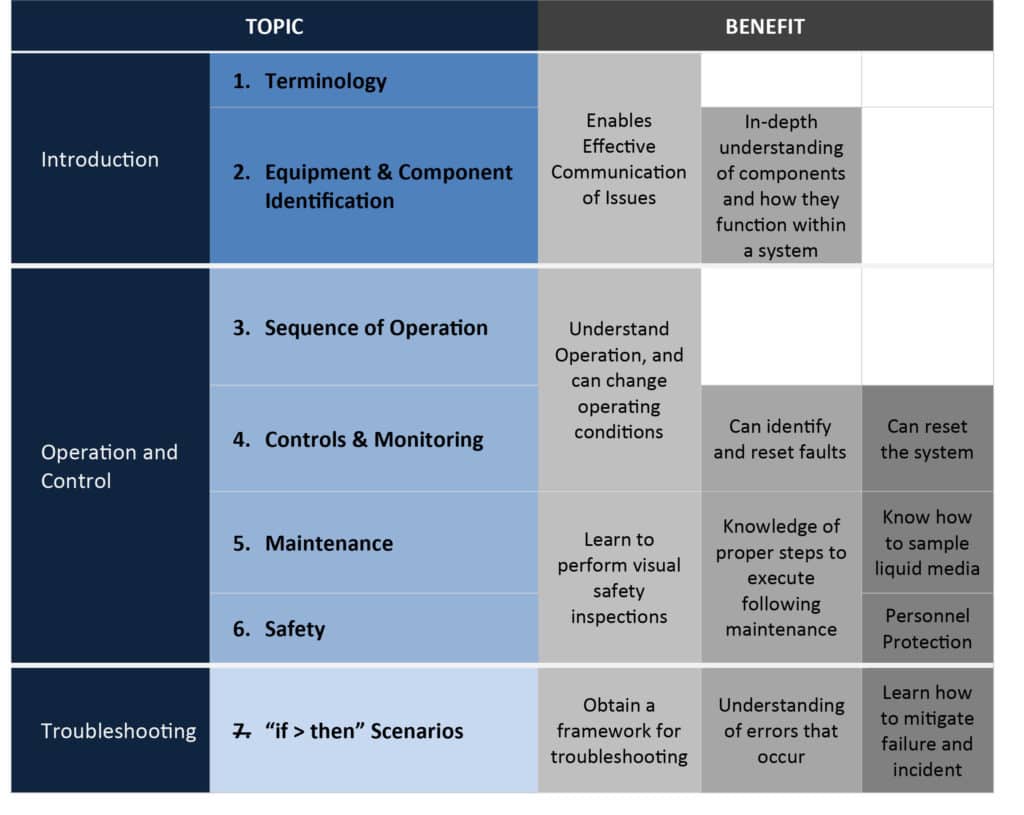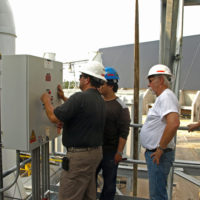Teamwork Can Make or Break Your Project
Industrial capital equipment projects can be complicated and expensive undertakings. Often many suppliers are working together with consultants and contractors to deliver a successful project to the customer. Each of these suppliers and consultants typically bring their own project team to the table. Whether they are aware of it or not, the conglomeration of companies will form a collective project team. A lack of teamwork between each group on a project can result in missed budgets, schedule overruns, or, worst of all, a poor system design that does not meet performance goals. If you want your project and team to prosper, it’s essential for everyone to understand what it takes for all parties to function as an integrated team.

Common Problems and Pitfalls
One of the most common problems faced by project teams is poorly defined project goals and scope from the outset. This can be as simple as an inadequately worded proposal that lacks a clear definition, or a failure to document or transfer important details from the sales team to the project execution team. In some instances, during the project bidding phase, teams can have conflicting project goals that are not visible. If these misalignments are not identified and clarified at the beginning of the project, they will inevitably surface later, at which time they can be both expensive and time-consuming to resolve.
Failure to have consistent and functional communication can derail a project at any stage. This type of breakdown happens regularly between companies and within their internal teams too. The breakdown can occur when two or more companies lack the discipline needed to communicate. A good example of this is when a customer has empowered an engineering consultant to review and approve vendor documents, but rather than pass comments through to the consultant(s), the customer makes requests or comments directly to the vendor. Another common failure occurs when engineers from two or more companies meet and make impactful decisions, but don’t properly document/communicate those decisions through the established communication channels.
It’s not unusual for a team to have some minor misunderstandings—that can happen in any work setting. However, that’s not the same as a systemic communication problem that creates a ripple effect throughout the project. If team members can’t clearly communicate changes to one another in a timely manner, budgets can spiral out of control as part of the team proceeds with old plans that go in the wrong direction, wasting time and money.
Successful Project Teams

Nearly every project team genuinely wants the best outcome for their project. If you ask any given team at the outset of the project if they want to provide good customer service and deliver quality products and services on time and on budget, they would undoubtably say yes. So how is it that so many of those well-intentioned teams don’t succeed? The difference between a good and bad project team is how they convert those intentions into action and ultimately success.
What Do Good Project Teams Do?
Good project teams define customer service and quality products in finite terms instead of defining them as abstract goals. They turn those goals into specific tasks, and through the execution of tasks, they can achieve success. Written and highly visible goals should be clearly defined at the outset and discussed frequently throughout the project. Any conflicts between customer goals and internal company goals should be identified and addressed openly with the customer. The project plan and the tasks that make up that plan should reflect those aligned goals in every step.
“The single biggest problem in communication is the illusion that it has taken place.”
– George Bernard Shaw
Communicate
 Nobody intends to fail at communication. So why are we so bad at it at times? Most of us believe that being a good or bad communicator is a trait that we are born with, or it’s a behavior/skill that we learn. There is truth in both. However, having the natural ability to communicate should not be confused with having functional communication skills within a complex project team. While it is necessary for small groups (within a team) to collaborate about many project details, the information in and out of any group should be centralized and shared with the broader team in a systematic way. Written rules should be established detailing which individuals will manage the primary communication channels, what information will be shared, how frequently, and in what manner will the information be posted or stored for others to see. Conversations that result in decisions or that document the underlying thinking behind decisions should be recorded in summary notes and posted or shared. Project goals, project schedules, changes, updates, and other information should be stored in such a way that it is always current and highly accessible to all team members.
Nobody intends to fail at communication. So why are we so bad at it at times? Most of us believe that being a good or bad communicator is a trait that we are born with, or it’s a behavior/skill that we learn. There is truth in both. However, having the natural ability to communicate should not be confused with having functional communication skills within a complex project team. While it is necessary for small groups (within a team) to collaborate about many project details, the information in and out of any group should be centralized and shared with the broader team in a systematic way. Written rules should be established detailing which individuals will manage the primary communication channels, what information will be shared, how frequently, and in what manner will the information be posted or stored for others to see. Conversations that result in decisions or that document the underlying thinking behind decisions should be recorded in summary notes and posted or shared. Project goals, project schedules, changes, updates, and other information should be stored in such a way that it is always current and highly accessible to all team members.
Communicate Project Changes
Project changes are inevitable when moving a project from initial concept to detailed engineering and design. It is highly likely that one of the project parties will create some kind of “planned” scope change, technical change, and/or schedule change. Therefore, every team should have a well-documented process to manage change. The process should:
- Communicate the changes to the broader project team
- Include methods to assess technical and commercial impacts
- Create possible solutions
Equally important, teams from different companies need to reach a consensus on how the change will be managed between them at the beginning of the project and not after the change has already occurred.
Communicate About Unplanned Events
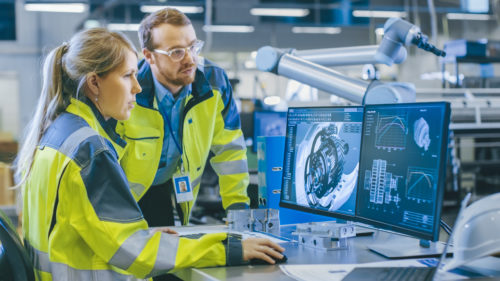 Despite having developed the best plans and systems, the world is not entirely within our control. Case in point – your parts were damaged during shipment, your vendor went out of business halfway through the job, it rained for 40 straight days, and your shipping container fell off the deck of the ship at sea (seriously – that happened).
Despite having developed the best plans and systems, the world is not entirely within our control. Case in point – your parts were damaged during shipment, your vendor went out of business halfway through the job, it rained for 40 straight days, and your shipping container fell off the deck of the ship at sea (seriously – that happened).
So, what do good teams do about those issues that nobody can anticipate? They plan to manage them. Changes forced by circumstance can be managed in much the same way as planned changes. In addition, teams can try and anticipate some of these issues by performing a project risk assessment at the beginning of the job. This can be as simple as gathering a group of experienced employees, reviewing the project scope and goals, and asking them to create a list of the most likely things that could go wrong. In many cases just creating that list of possible risks and making it visible to the project team throughout the project is enough to prevent the issue from happening.
Secure a Good Project Team
We have talked a lot about potential pitfalls and good practices, that are generally well understood. There isn’t any magic to it. What is interesting is that buyers of capital equipment don’t spend enough time or attention evaluating supplier processes or project team members. Excellent support from an effective project team is just as important as the quality of the systems and services ordered. During the evaluation phase of the buying process, a 10% difference in price can seem attractive, but keep in mind that a poor execution of your project can cost you 10 times that amount in delays, budget overruns, and frustration. Take the time to assess your suppliers – talk to them about their procedures, processes, and project personnel.
View our video describing Sigma Thermal’s commitment to customer service.Let us show you why we are the right process heating systems provider for your project.





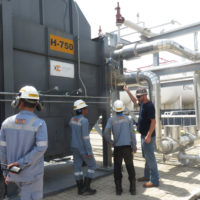 What happens when an operator abruptly leaves or retires from a manufacturing facility? In a number of industrial sectors, the absence of inexperienced operators and the presence of high turnover typically leads to a knowledge gap in many facilities. It can be hard to gauge whether current operators have the required knowledge to carry out their responsibilities safely. However, frequent operator training will ensure that all operators are up to date and informed about all aspects of the equipment, including maintenance.
What happens when an operator abruptly leaves or retires from a manufacturing facility? In a number of industrial sectors, the absence of inexperienced operators and the presence of high turnover typically leads to a knowledge gap in many facilities. It can be hard to gauge whether current operators have the required knowledge to carry out their responsibilities safely. However, frequent operator training will ensure that all operators are up to date and informed about all aspects of the equipment, including maintenance.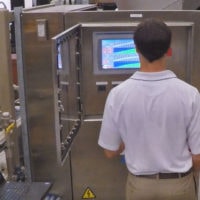 Generally, training sessions should include a system introduction, a summarization of system operation and control, safety, and a hands-on troubleshooting session.
Generally, training sessions should include a system introduction, a summarization of system operation and control, safety, and a hands-on troubleshooting session.